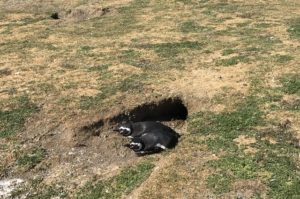We were off the boat early for a catamaran excursion to see the Magellan penguin reserve found on Magdalena Island. Skies were blue but temperatures were in the mid forties and the wind was whipping, which made it feel even colder. The boat ride into the Magellan Straits to the island took about an hour and a half. 

More than 9,000 pairs of mating penguins are on the island this year, down from 15,000 last year. No one can explain the drop. 

 People are confined to a roped path that rises to the 1902 lighthouse and descends again.
People are confined to a roped path that rises to the 1902 lighthouse and descends again.
We were also told to give penguins the right of way if one wants to cross the path in front of us.



Thousands of austral gulls were also nesting on the island. 
The main predator on both chicks is the Chilean skua, a large brown bird. The primary penguin predator are sea lions, and their numbers are up because the orca whales who prey on them did not show up last year. The penguins make a braying sound when they feel someone or something is too close to their nest.
When we returned to Punta Arenas, we decided we wanted to try some king crab for lunch and found La Luna ( recommended bu one of the guides on the boat).
 Not only did we try the crab but also conger eel ( served with scallops, shrimp, and muscles), a delicious meal.
Not only did we try the crab but also conger eel ( served with scallops, shrimp, and muscles), a delicious meal.  Next, we found the main square with a statue of Magellan. At the base of the statue is a native Indian with a shiny brass toe, the story being if you touch or kiss his toe, you will return to Punta Arenas.
Next, we found the main square with a statue of Magellan. At the base of the statue is a native Indian with a shiny brass toe, the story being if you touch or kiss his toe, you will return to Punta Arenas. 
The square is filled with blooming trees and surrounded by beautiful old mansions, many now museums.  Unfortunately, several of these were boarded up, presumably in response to the protests, which must have reached here.
Unfortunately, several of these were boarded up, presumably in response to the protests, which must have reached here.

Later that evening, we sailed into beautiful snow-capped mountain ranges with hanging glaciers in some of the valleys.





